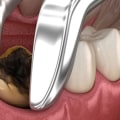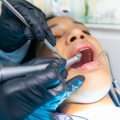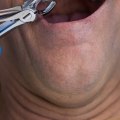If you are experiencing severe tooth pain or have a damaged, decayed, or infected tooth that can't be treated with a filling, root canal therapy, or other restorative procedures, your dentist may recommend a tooth extraction. While the thought of having a tooth pulled out can make anyone anxious and scared, knowing what to expect during the procedure can help ease your worries and prepare you for the process. In this article, we will discuss what happens during a tooth extraction procedure with an Austin emergency dentist. Whether it is wisdom teeth removal or extracting a broken molar, understanding the steps of tooth extraction will help you get through it more smoothly and comfortably.
Signs That You May Need A Tooth Extraction
There are several signs and conditions that may indicate the need for a tooth extraction. However, it's important to note that only a dental professional can accurately diagnose and recommend tooth extraction based on a thorough examination. If you're experiencing any of the following symptoms or conditions, it's best to consult with a dentist:
- Severe tooth decay: Extensive tooth decay can damage the tooth beyond repair, making extraction necessary.
- Tooth infection: When tooth decay reaches the pulp of the tooth, it can lead to a bacterial infection called an abscess. In some cases, a root canal treatment may be performed to save the tooth, but extraction may be required if the infection is severe or if the tooth cannot be saved.
- Periodontal (gum) disease: Advanced gum disease can cause teeth to become loose and shift, leading to the need for extraction.
- Impacted wisdom teeth: Wisdom teeth, also known as third molars, often don't have enough space to fully emerge or develop properly. Impacted wisdom teeth can cause pain, infections, and damage to nearby teeth, requiring extraction.
- Overcrowding: In some cases, tooth extraction may be necessary as part of orthodontic treatment to create space for proper alignment of the remaining teeth.
- Fractured or broken teeth: Severe tooth fractures or breaks may not be salvageable and may require extraction, especially if they cannot be restored with dental treatments like fillings or crowns.
- Trauma or injury: If a tooth is severely damaged due to trauma, extraction may be the best course of action to prevent further complications.
- Extra teeth: Sometimes, individuals may have extra teeth, supernumerary teeth that prevent proper alignment or impede the eruption of permanent teeth. In such cases, extraction may be recommended.
Remember, if you suspect any issues with your teeth or experience persistent dental pain, it's essential to consult with a dental professional who can properly diagnose and recommend the appropriate treatment, including tooth extraction if necessary.
Preparing For Your Procedure
If you have determined that a tooth extraction is necessary, the next step is to prepare for your procedure. Your Austin emergency dentist will provide you with pre-op instructions to follow before your appointment. These may include avoiding food and drink for a certain amount of time prior to the procedure, taking medication as prescribed, and arranging transportation if sedation will be involved.
It is normal to feel some anxiety about undergoing a tooth extraction, but there are ways to manage it. Be sure to communicate any concerns or fears with your dentist beforehand so they can help alleviate them. Deep breathing exercises, visualization techniques, and listening to calming music during the procedure can also help reduce anxiety levels. Remember that your dentist is highly trained in performing tooth extractions and will take all necessary precautions to ensure a safe and successful outcome.
Numbing And Sedation Options
As the dentist prepares for your tooth extraction procedure, you may be wondering about what numbing and sedation options are available. Fortunately, there are a variety of methods that can help ensure your comfort during the process. One common option is local anesthesia, which involves injecting medication directly into the area around the tooth being extracted to numb it. This allows you to remain awake and alert throughout the procedure while minimizing any pain or discomfort.
Another option is general anesthesia, which puts you into a temporary state of unconsciousness so that you will not feel anything during the procedure. Your emergency dentist in Austin will discuss these options with you beforehand to determine the best course of action based on your individual needs and preferences.
The Tooth Extraction Process
The tooth extraction process can be daunting, but with an experienced Austin emergency dentist, it can go smoothly. The first step is to numb the area around the tooth using local anesthesia so that there will be no pain during the procedure. Once the area is numb, the dentist will use special tools to loosen and remove the tooth from its socket.
During the extraction process, patients may feel pressure or movement in their mouth, but they should not experience any pain. Afterward, some discomfort and swelling are normal, but this can be managed with over-the-counter pain medication prescribed by your dentist. It's also important to discuss tooth replacement options with your dentist before undergoing an extraction to ensure you have a plan for restoring function and appearance to your smile.
Aftercare And Recovery
Now that you have an idea of the tooth extraction process, it is important to know what comes next. After your emergency dentist in Austin has successfully extracted your tooth, they will provide instructions on how to manage any pain or discomfort you may experience during recovery. Pain management options may include over-the-counter medications such as ibuprofen or acetaminophen, prescription pain relievers, or topical numbing agents.
In addition to pain management, your Austin emergency dentist will likely recommend certain dietary restrictions for a period of time following the procedure. Soft foods like yogurt and mashed potatoes are often recommended for the first few days after extraction since hard or crunchy foods can irritate the area where the tooth was removed. It's also best to avoid smoking and using straws as these actions create suction which can dislodge blood clots necessary for proper healing. Following these guidelines will help ensure a smooth and speedy recovery after your tooth extraction procedure.
Follow-Up Care With Your Austin Emergency Dentist
After your tooth extraction procedure with an Austin emergency dentist, it is important to follow up with proper care. This will include taking the necessary steps to manage any discomfort or pain you may experience during the recovery time. Your Austin emergency dentist will provide you with detailed instructions on how to properly care for the area where your tooth was extracted.
It is crucial that you adhere to these instructions in order to promote healthy healing and minimize any potential complications. Additionally, your dentist may prescribe pain management medication or suggest over-the-counter options to help alleviate any discomfort during the recovery process. By following through with post-operative care, you can ensure a smooth and comfortable recovery from your tooth extraction procedure.
Contact An Emergency Dentist For A Tooth Extraction Procedure In Austin
If you are looking for an emergency dentist in Austin for a tooth extraction procedure, North Austin Dentistry is a reputable option to consider. They provide comprehensive dental care and offer emergency services to address urgent dental needs. North Austin Dentistry is known for its experienced team of dentists who are skilled in performing tooth extractions efficiently and with utmost care. They understand that dental emergencies can be distressing, and their staff is trained to provide prompt and compassionate care to alleviate your discomfort. Contact them today to schedule an appointment.






